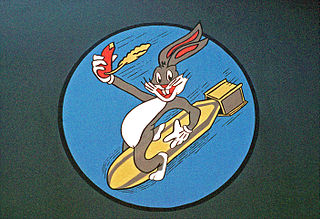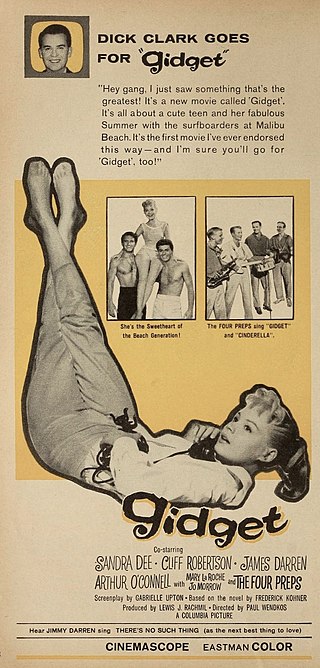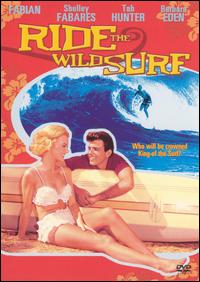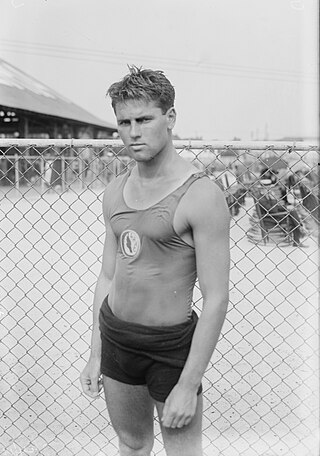Robert George Patterson ("Bobby" or "Flea", born February 22, 1935), was a surfing star of the 1950s.
Robert George Patterson ("Bobby" or "Flea", born February 22, 1935), was a surfing star of the 1950s.
The oldest of three surfing brothers, Robert, Ronald and Raymond and one of the first surfing "nose riders", Bobby came to California from Hawaii [1] circa 1953, and stayed in Santa Monica, initially with surfer Mickey Munoz. He married Mary Quijano in 1962 and had three children Kimberly, Kerrick and Jolien (Joe). He also had another daughter from a later marriage named Michelle. For many years, he was a prominent "Surfboards by Velzy" team member. Bobby and his brothers later became the backbone production team of the Hobie Surfboards manufacturing plant in Dana Point, CA.
Patterson won the Malibu Invitational surfing competition in 1964. [2] [3]
I was a judge at the '64 contest and watched 29-year-old Bobby Patterson, 10 years past his prime, still win easily. 1953-'60 there was no better surfer in the world. Patterson, tops in Hawaii, had brought nose riding to Malibu's perfect wave and even according to Mickey Munoz, taught us all by example. - Tom Norey -

Duke Paoa Kahinu Mokoe Hulikohola Kahanamoku was a Hawaiian competition swimmer who popularized the sport of surfing. A Native Hawaiian, he was born three years before the overthrow of the Hawaiian Kingdom. He lived to see the territory's admission as a state and became a United States citizen. He was a five-time Olympic medalist in swimming, winning medals in 1912, 1920 and 1924.

A surfboard is a narrow plank used in surfing. Surfboards are relatively light, but are strong enough to support an individual standing on them while riding an ocean wave. They were invented in ancient Hawaii, where they were known as papa he'e nalu in the Hawaiian language, and were usually made of wood from local trees, such as koa. They were often over 460 cm (15 ft) in length and extremely heavy. Major advances over the years include the addition of one or more fins (skegs) on the bottom rear of the board to improve directional stability, and numerous improvements in materials and shape.

Laird John Hamilton is an American big-wave surfer, co-inventor of tow-in surfing, and an occasional fashion and action-sports model and actor. He is married to Gabrielle Reece, a former professional volleyball player, television personality, and model.
Tom Hugh Morey, also known by the moniker Y, was a musician, engineer, surfboard shaper, and surfer responsible for several technological innovations that have heavily influenced modern developments in surfing equipment design.

Noseriding is the act of riding the front end of a surfboard. It is one of the most accomplished manoeuvres in surfing. Some advanced manoeuvres include: hang ten toes, hang five toes, stretch-five, front foot/heel hang, and back foot/heel hang. Noseriding is a functional manoeuvre best performed on waves around head high or less in size. Noseriding is performed mainly on noserider-style surfboards, which are generally 275 cm (9 ft) or more in length, with larger surface area and higher water displacement to provide a more stable walking surface.
Greg Noll was an American pioneer of big wave surfing and a prominent longboard shaper. Nicknamed "Da Bull" by Phil Edwards in reference to his physique and way of charging down the face of a wave, he was on the U.S. lifeguard team that introduced Malibu boards to Australia around the time of the 1956 Summer Olympics in Melbourne. He produced a "legendary" series of five Search for Surf films.

Surf movies fall into three distinct genres:

Simon Anderson is an Australian competitive surfer, surfboard shaper, and writer. He is credited with the 1980 invention of a three-fin surfboard design, called the "thruster".
Mickey Muñoz, aka Mickey Munoz, nicknamed "The Mongoose", is an early surfing pioneer and surfboard shaper.

The riding of waves has likely existed since humans began swimming in the ocean. In this sense, bodysurfing is the oldest type of wave-catching. Undoubtedly ancient sailors learned how to ride wave energy on many styles of early boats. Archaeological evidence even suggests that ancient cultures of Peru surfed on reed watercraft for fishing and recreation up to five thousand years ago. However, standing up on what is now called a surfboard is a relatively recent innovation developed by the Polynesians. The influences for modern surfing can be directly traced to the surfers of pre-contact Hawaii.

A surfboard shaper is someone who designs and builds surfboards. The process of surfboard shaping has evolved over the years, and the shaper often tailors his or her work to meet the requirements of a client or a certain wave. Surfboard shapers can be independent or work in collaboration with mass-production companies.
The Duke Kahanamoku Invitational Surfing Championship is named in honor of the "Father of Modern Surfing", Duke Paoa Kahinu Mokoe Hulikohola Kahanamoku. The contest began in 1965 by invitation only at Sunset Beach on the North Shore of Oʻahu until it was replaced by the Billabong Pro in 1985. The championship was the first surfing event to be broadcast on a regular basis by ABC's Wide World of Sports.

Hobart "Hobie" Laidlaw Alter was an American surf and sailing entrepreneur and pioneer, creator of the Hobie Cat catamarans, and founder of the Hobie company. He created the Hobie 33 ultralight-displacement sailboat and a mass-produced radio-controlled glider, the Hobie Hawk.

Miklos Sandor Dora III, known professionally as Miki Dora, was a noted surfer of the 1950s and 1960s in Malibu, California.

Ride the Wild Surf is a 1964 American romantic drama film. It was filmed in 1963 and distributed in 1964. Unlike the beach party movies of the era, this was a departure from the typical Hollywood approach to surfing as it was a drama, not a comedy. It is known for its exceptional big wave surf footage – a common sight in surf movies of the time, but a rarity in Hollywood films. Likewise, the film has only one pop song – the titular Jan and Dean track, which is heard once, at the end of the film.

Surf Party is a 1964 beach party film directed by Maury Dexter and starring Bobby Vinton, Patricia Morrow, Jackie DeShannon, and Ken Miller. It was the first direct imitation of AIP's hit Beach Party, which was released six months earlier, and showcased several musical acts onscreen. It is one of the few movies in the genre shot in black and white.
Donald Moke Takayama was an American professional surfer and surfboard shaper. Originally a longboard surfer, Takayama won the Master's division of the United States Surfing Champions in 1971, 1972 and 1973. Hawaiian born, Takayama learned to surf at Waikiki Beach and moved to California in the mid-1950s. Takayama died of complications from heart surgery; he is survived by his wife and four daughters.

Surfing in the United States is a popular hobby in coastal areas, and more recently due to the invention of wave pools, inland regions of the country. It contributes to a lifestyle and culture in which millions participate and which millions more have an interest. USA surfing is the governing body for the sport of surfing in the United States, with surf leagues such as the World Surf League available in the country. Surfing can be traced back to 17th Century Hawaii and has evolved over time into the professional sport it is today, with surfing being included for the first time in the 2020 Summer Olympics in Tokyo.

Thomas Edward Blake was an American athlete, inventor, and writer, widely considered to be one of the most influential surfers in history, and a key figure in transforming surfing from a regional Hawaiian specialty to a nationally popular sport. Assessing Blake's significance, sociologist Kristin Lawler wrote that